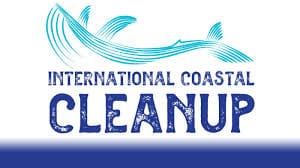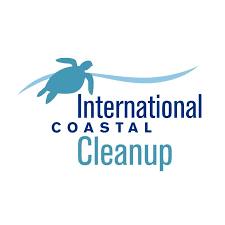International Coastal Cleanup Day – September 17, 2022, history, quotes, FAQS
International Coastal Cleanup Day on September 17 is a promise to bring cleanliness and purity to nature as a whole. The day was started as a way to raise awareness about the growing pollution on various beaches of the world. Population growth and capitalism are just two of the main factors that have led to severely high levels of pollution in the environment, particularly in the oceans that make up over 70% of our planet.
Water has a cyclical nature, which means that anything we are putting into our oceans and other water bodies will come back to us sooner or later. For every mile of ocean, there are at least 46,000 pieces of plastic debris floating within said distance. Furthermore, as plastic does not decompose over a long period, and only disintegrates, minute plastic particles are already showing up in our food and water. If these trends continue, it won’t be long before we face disastrous outcomes for our environment.
HISTORY OF INTERNATIONAL COASTAL CLEANUP DAY

The International Coastal Cleanup Day came into existence more than 30 years ago. It was founded by Linda Maraniss and Kathy O’Hara, both of whom worked at the Ocean Conservancy, a nonprofit environmental agency that specializes in formulating resolutions and policies at federal and governmental levels.
In 1986, Maraniss was inspired by O’Hara’s work and dedication towards cleaning up the ocean. The latter’s paper, which was due to be published next year, focused on plastic pollution in the ocean. Maraniss discussed her interest with O’Hara about starting a day to bring attention to the oceans’ growing pollution problem.
They approached several environmental groups and activists with the idea, and in no time, the duo had enough support to start an official cleanup. The idea was simple: Go to a local beach with a garbage bag and start picking up trash in order to reduce the amount that would be swept into the ocean by water or wind.
Cleaning up the beaches wasn’t the only aim of the International Coastal Cleanup Day. Another important goal was to document and study the type of trash collected during the cleanup. Documentation included studying the trash’s material, where it could have come from, how long it would take to disintegrate, and what impact it would have on the ocean and the species living in it.
Once everything is identified and documented thoroughly, the governments are informed about the findings. In order to prevent further damage, lobbying efforts are started at national and international levels. Industries also face policies that would stop them from either producing such items or dumping them into the oceans. Ever since its inception, the day has seen over 6 million cleanup volunteers in over 90 countries.
INTERNATIONAL COASTAL CLEANUP DAY TIMELINE
1972
Ocean Conservancy Created
Ocean Conservancy is created as a nonprofit organization working to help American coastlines from pollution.
1986
First International Coastal Cleanup Day
Linda Maraniss and Kathy O’Hara gather organizations and volunteers to organize the first International Coastal Cleanup Day.
2018
Almost Quarter Billion Trash Removed
One million volunteers from all over the world remove at least 23 million pounds of trash from beaches and coastlines.
2020s
The Ocean Decade
UNESCO announces the 2020s to be the official Ocean Decade in order to educate the world about the different ways they can take part in cleaning the oceans.
HOW TO OBSERVE INTERNATIONAL COASTAL CLEANUP DAY
Volunteer for a cleanup drive
This is the perfect day to go to your local beach and offer your time and services to clean it up. If no cleanup drives are happening around you, don’t worry. You can organize one yourself and get people to volunteer and help you with the cleanup.
Call out litterers
Keeping yourself and your environment neat and clean is one of the most basic hygiene practices we are taught as young children. Bring back the cleanliness lessons and implement them on yourself and those around you. Do not stand littering as eventually, it will come to harm you (and the litterers) in the long run one way or another.
Reduce your plastic usage
Plastic started as a boon for many as it is durable and can be used to store a variety of things. But it is these very qualities of plastic that have turned it from a boon to a curse. The plastic toothbrush or spoon that you used 10 years ago and discarded, is still out there somewhere. It hasn’t decomposed and won’t be so for the next several hundred years. The best way to reduce plastic pollution is to reduce your own usage of the product by opting for bio-friendly options.
5 FACTS ABOUT OCEANS THAT WILL BLOW YOUR MIND
The majority of life is aquatic
The majority of life on our planet — a solid 94%, is aquatic, needing water for their living conditions.
The majority of oceans are unexplored
Only about 5% of the oceans have been explored, with the rest of the 95% remaining untouched.
Oceans produce oxygen
The oceans produce around 70% of the oxygen in the world.
Land canyons have nothing on ocean canyons
The Zhemchug Canyon, located in the Bering Sea, is vertically over 8,500 feet, which is 2,500 deeper than the Grand Canyon in America.
Coral produces its own sunscreen
Coral in shallow water fluoresce, producing sunscreen, to protect the algae living in them as algae are a major sustenance source for coral.
WHY WE LOVE INTERNATIONAL COASTAL CLEANUP DAY
It’s a reminder of cleanliness
Cleanliness is one of the major factors that can allow us to lead a healthy life. Science has been proving this hard fact for centuries. Thus, it is important to practice cleanliness in all areas of life for us to fully enjoy Mother Nature’s sources.
It’s a celebration of beautiful beaches and coastlines
Ask yourself the following question: Would you willingly take yourself and your loved ones for a day out at the beach even though it wasn’t clean? Most likely not because you will be afraid of the dangers a dirty environment would bring. Now let’s keep our selfish motives aside and focus on those creatures who would have no choice but to continue living amongst trash. Think about them and work to make your beaches clean, safe, and beautiful again.
It’s a reminder of responsible living
Every action has a reaction. What we do today will impact our tomorrow. Therefore, be careful about throwing away your trash. Choose environmentally friendly products. These minor changes in your life may seem inconsequential when looking at the big picture, but trust us, even if one of us decides to take the first step, it’s going to have a positive outcome sooner or later.
How to Celebrate International Coastal Cleanup Day
Many creative options to celebrate this day exist! Consider these ideas or come up with some of your own:
Hit the Beach–with Garbage Bags
Start with something as simple as taking a day at the beach and carrying a roll of garbage bags. Clean up the mess on the beach and help to reduce the amount of garbage that gets into the ocean by hauling it away.
Host a International Coastal Cleanup Day Event
During the years of this day, more than 12 million volunteers have collected over 220 million pounds of trash from the world’s beaches, rivers, lakes and coastlines. Join the wave by gathering some friends and community members to take a trip to the water and get cleaning on this day!
It’s not even necessary to live by an ocean or sea, since all waterways lead to the ocean eventually. Head over to a local riverbed, lakeside or even a canal or pond that could use a bit of attention. With garbage bags, plastic gloves and trash-picker sticks in hand, send groups of people out to have fun making the earth a much nicer place for people, plants and wildlife!
Access this cleanup guide for help in organizing an event for the day.
Download the Clean Swell App
It’s more fun and encouraging to spend time cleaning up beaches when it’s possible to see the impact being made individually and collectively! That’s why the Clean Swell App was created by the Ocean Conservancy, to track trash cleanup. Users of the app can use it to:
- Track the distance of beach they have cleaned up
- See the total weight of the trash they’ve collected
- Share cleanup results with friends and family on social media
- Join with others to create global trash solutions by providing information from the local area
Clean Swell® App
It’s a great way to do a few small things that participate in a global effort to clean up the world’s coastlines!
Check Out The Ocean Decade
Because the oceans are in such a dire situation, the United Nations Educational, Scientific and Cultural Organization (UNESCO) has seen fit to organize The Ocean Decade for the 2020s. This effort educates and coordinates individuals, governments and corporations to work together toward cleaning up the oceans in a variety of ways.
Get Resources From the Ocean Conservancy
A great way to get ideas would be to check in with the Ocean Conservancy to get tips and tricks to help you be more conscientious about your lifestyle and the effect it has on the ocean.
The Ocean Conservancy serves as a voice for the ocean, speaking of the issues that aren’t often represented through social networking, publicized updates, and challenges like asking your waitress to skip the straw for your drink.
Plastics are extremely hazardous to marine life, killing more than a million birds and over 100,000 seals, turtles, and whales, and an immense number of fishes in our ocean. International Coastal Cleanup Day encourages people to get out to the planet’s beaches and help to limit this problem by cleaning up the garbage that has either washed up on shore or that has been left by visitors each day.
Even the smallest of efforts, done together all over the world, help move the future towards a trash-free ocean. International Coastal Cleanup Day is the perfect chance to really make a difference, and help others to do the same!
Sandeep Raiza — Content Writer, Website Designer, SEO Strategist, and WordPress Expert AI specialist delivering impactful digital solutions that drive business growth.Combining creative storytelling with technical expertise.




